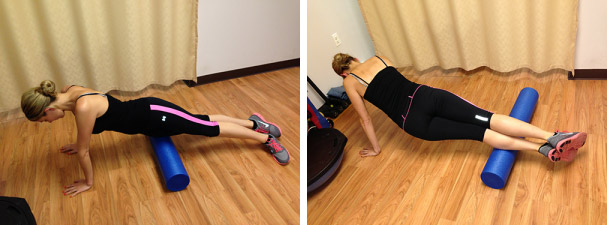The Downside to Upping Your Mileage: Runners Knee
April 20, 2020
Now that the marathon is approaching, some runners are starting to breakdown and suffer from various injuries. Knee pain that occurs while running is referred to as Runner’s Knee and can occur during and after a run in the peak of training.
Runner’s Knee is a term synonymous for Patellofemoral Pain Syndrome. Runner’s Knee is a common injury that occurs during training due to specific muscle imbalances from biomechanical causes at the hip, knee, or foot.
Changing your shoes and the way you strike your foot during running may also contribute to your pain. The knee may also feel stiff and painful after going up and down stairs as well as with prolonged sitting.
Runners will start to feel a pain in the front of their knee just below their kneecap. The imbalances that occur are from weak gluteal and hip muscles and a tight IT (Iliotibial) band.
What To Do When This Happens:
1) Rest
If your knee continues to hurt after a few runs, be sure to rest and take a break from running for a few days. Be sure to ice and take an anti-inflammatory. Make sure to do some strengthening and foam rolling in the meantime. If your pain does not resolve within 24-48 hours, please consult a medical professional.
2) Strengthen Your Glutes:
The glutes are powerful muscles that provide a lot of power and help to stabilize the legs and promote better alignment. Below are 2 glute strengthening exercises to do:
Bridging:
 When you bridge you want to make sure that you are squeezing your glutes the whole time. You may feel a compensation with cramping in your hamstrings. Once you perform 3 sets of 10 without cramping, try bridging on one leg at a time (pictured at right).
When you bridge you want to make sure that you are squeezing your glutes the whole time. You may feel a compensation with cramping in your hamstrings. Once you perform 3 sets of 10 without cramping, try bridging on one leg at a time (pictured at right).
Before beginning this exercise, squeeze your glutes with both feet on the ground and then raise your pelvis into the air. Then extend one leg out in front and hold for 5 seconds while you continue to contract your glutes. Bring the leg down followed by your bottom while you hold your glutes as you slowly lower to the ground. Take a 5 second break before you squeeze your glutes again and perform this exercise with the other leg in the air. Perform this exercise 5x on each leg everyday.
Hip Hikes:
You want to step sideways on the side of the step bringing the rest of the body up with you and holding for 2 seconds and repeat. You want to perform 3 sets of 10 on each side to help maintain equal strength in your hips on each leg.
3) Foamrolling
Foamrolling is the best way to keep your muscles loose and can be followed up with stretching. This technique allows you to maintain proper muscle length so that your muscles function properly. You want to roll different angles of each muscle so you want to roll your whole leg and not just certain parts of it. You want to roll the front and back of your legs. So be sure to roll your quads, hamstrings,calves, and the front of your shins. Pictured below is an example of rolling your quad and your shin.
At Integrative Spine & Sports, we specialize in knee pain treatment and knee osteoarthritis. If you have any further questions, or would like to book an appointment, please contact us at: [email protected]
Related article: Hyaluronic Acid Injections for Knee Pain














